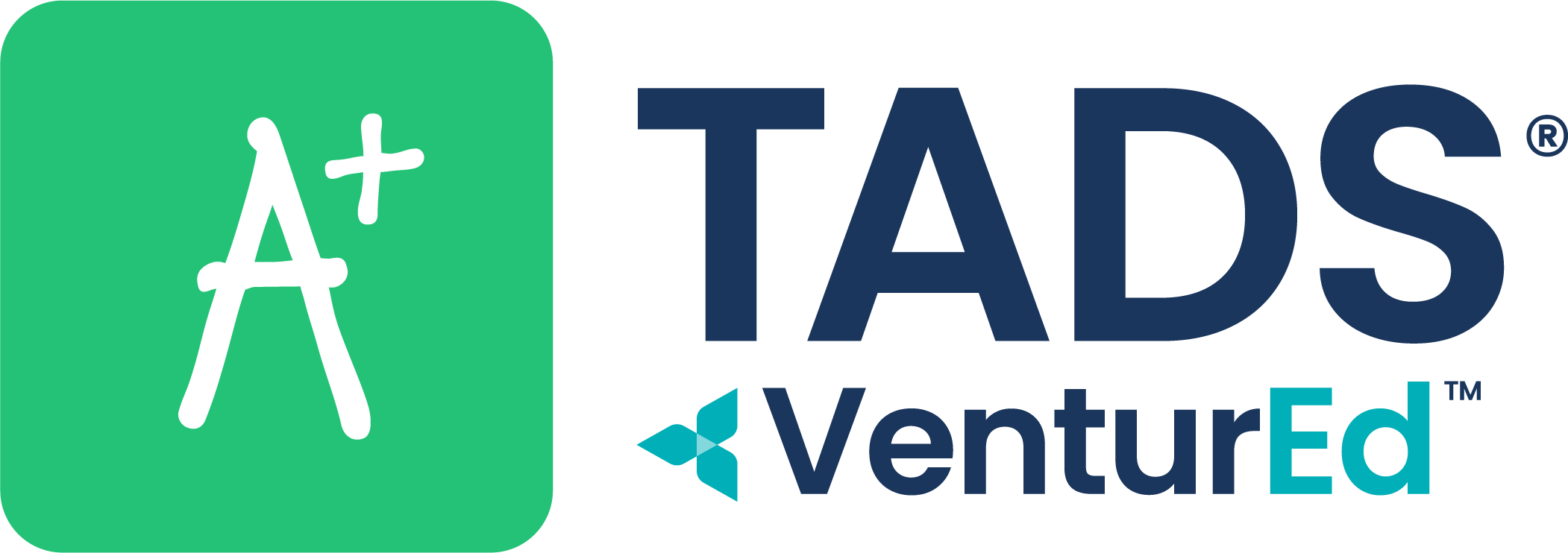
Private schools rely on high enrollment numbers to build their budgets, which is why good marketing is so important. You need to keep attracting new students every year to continue providing the same quality of education your families have come to expect.
Due to rising costs and pervasive stereotypes, though, private schools face unique challenges in reaching potential students and their families. Finding innovative ways to demonstrate the value of your school is essential for any successful outreach attempt—and in today’s world, innovation happens online.
We created this brief guide to shed a little light on how to market a private school effectively across various digital channels.
In This Article
What Is Inbound Marketing for Private Schools?
Inbound marketing is a digital marketing strategy that involves attracting your audience using helpful, engaging content. Compared to outbound marketing, which is when the organization reaches out to audiences through promotions, public relations, and commercials, inbound marketing is generally more effective at convincing audiences to convert because it tends to be less sales-oriented. Think of it this way—inbound marketing shows while outbound marketing tells.
So, how does this concept play into private school marketing? Crafting useful, compelling content that appeals to prospective students and their families helps you build a relationship with them. With the proper care, you can turn that relationship into an application for admission.
9 Private School Marketing Ideas
Most schools already invest in recruiting strategies like campus open houses and online information sessions, but recruiting is only part of the enrollment equation. Inbound marketing is what makes people aware of your school and draws prospective families into your recruitment funnel.
Here are some inbound marketing strategies private schools can use to boost engagement with prospective students.
1. Identify Your Niche

Before you begin planning specific steps to promote your school, you want to determine what you can do to make your school stand out and appeal to potential students and families. Your niche makes your school unique—what your school has that students can’t find at your competitors.
Understanding what makes your school attractive to students and stands out from the competition can help you know what to feature in your marketing. You can highlight anything about your school that you like, including:
- Specific programs, like arts or STEM.
- Teaching techniques of high-performing instructors.
- A particular aspect of your campus, like a recently renovated sports center.
When you highlight what makes you different, you can help attract students looking for those elements. For example, advertising your state-of-the-art basketball court on your school’s social feeds can draw the attention of students looking to pursue basketball seriously.
2. Get to Know Your Key Demographics
Successful marketing campaigns depend on a solid understanding of the audiences you want to reach. A private school marketing strategy has two primary audiences—potential students and their families.
Although it’s extremely important to connect with students, their families are the ones who will choose which school they attend in most cases. The parents and caregivers of today’s K-12 students are mostly either millennials or late Gen X. Because these two generations are incredibly different in their attitudes and behaviors, finding messaging that appeals to both demographics can be challenging.
That’s why you’ll also want to get to know your community before you begin designing any marketing materials. Regardless of their individual ages or backgrounds, the people who will be part of your school will typically share some of the same core beliefs and values. For example, a religious private school will want to highlight its commitment to upholding that religion’s traditions to appeal to potential families.
3. Use Social Media to Promote Schools
Social media has become a powerful tool for marketing schools because it allows you to share several kinds of information and reach many audiences. It’s also a great vehicle for passively expanding your online presence. The algorithms that power social media can accurately recommend content that users will like, increasing the chances they will share your posts with others.
Consistency is critical for launching a successful social media campaign. Any organization that wants to take advantage of social media marketing should invest in developing a strong brand voice and visual identity.
A brand is necessary for communicating important information about your school to your audience, such as your values and personality. It also makes your school instantly recognizable, which can help you increase your school’s presence both in the real world and online.
Some factors to consider when developing a brand include:
- Tone
- Colors
- Symbols
- Logos or mascots
- Mottos or taglines
Posting frequently is another essential component of consistency in social media marketing. If you want to boost engagement and views, you need to continually develop excellent content. Digital tools can help you plan out how frequently you should post and where.
Each platform attracts a specific demographic, which means you can use different platforms to highlight your niche in unique ways. For example, video-sharing platforms YouTube and TikTok are extremely popular with teens — which makes them great places to share short videos showcasing your school. Similarly, you can share announcements and photos of your football team’s recent victory on Twitter and Instagram. Considering each platform’s strengths can help you determine how to share information in the most engaging ways.
You can also use social media to build online communities around your school. For example, creating a Facebook page allows community members to interact with you and each other, increasing engagement and enabling followers to share your content and bring others into your community.
4. Create Personalized Content
While targeting your niche through social media content can help you gain the attention of families and prospective students, personalized content will help you keep their interest.
Content marketing is one of the most effective marketing strategies for schools because it helps you connect with potential students and their families on a more personal level. Delivering personalized content demonstrates that your school is committed to meeting each student where they are and helping them pursue their unique interests and goals.
When students and families visit your campus or make an account online, you can ask them to fill out a form with their contact information and interests. You can use this information to send targeted content that speaks to those students and enables them to imagine what it would be like to attend your school.
They might receive email updates about science programs you offer or a postcard in the mail inviting them to your next football game. Families can choose what they prioritize, allowing you to connect them to important recruiting events on campus, like open houses where they can speak with faculty about academics or campus tours.
5. Build a Dedicated Marketing Team

Being aware of all your resources can help ease the load on staff and create a dedicated team. Too often, though, marketing private schools means pulling tools from unlikely places. Schools typically tap office staff, administrators, or teachers to take on marketing responsibilities. Although it helps to have people who are passionate about your school in charge of marketing, these individuals rarely have enough time available to run a marketing campaign that drives results.
Make building a dedicated team part of your private school marketing plan. Rather than relying on your existing staff to develop your marketing content, invest in hiring full-time marketing and admissions directors. Smaller schools can combine these positions if needed, as they’re quite similar in their responsibilities.
You can also draw extra support from your community. Families love to get involved in their children’s schools. If you need more people to help you carry out your marketing goals, you can reach out to families of current students. Passionate families can be great sources for user-generated content, like photos, social media posts, and videos, which you can use to show prospective families how great it is to attend your school.
6. Leverage Influencers and Word of Mouth
When people have great experiences, they want to share them with their friends and community. This is known as word-of-mouth marketing, and it’s a great way to drive interest in your school. According to one recent survey, 81% of respondents said social media posts from friends, family members, and influencers made them interested in specific brands.
An ambassador program is one of the most effective word-of-mouth marketing strategies for schools because it harnesses the human desire to share positive experiences and uses it to influence prospective families to enroll at your school.
You can think of an ambassador program as a way to work with influencers—content creators who have the ability to influence their audience’s behaviors by promoting brands or products. Although working with influencers usually doesn’t qualify as organic word-of-mouth marketing, it’s still an excellent way to build trust with your audience.
Fortunately, schools have a ready source of influencers available to them—their alumni. Tapping into your alumni network can help you identify former students who are excited to share their experiences with families considering your school. These alumni can help connect your school to the general public and answer basic questions families might have about attending.
You can also recruit the parents and family members of current students to become ambassadors. Families that are passionate about their students’ education are typically happy to spread the word to others in the community, and hearing how great your school is can convert more potential students to enrollees.
7. Optimize Your Content for Search Engines
Did you know the vast majority of people only look at the first page of Google results? If your school lands on the second page or beyond, people using search engines to research schools in your area might be missing you.
Search engine optimization (SEO) is a type of digital marketing that involves improving your website and content to rank higher on Google. Some examples of SEO techniques include:
- Making your website easier to navigate
- Improving website accessibility
- Strategically placing keywords throughout each page
- Linking to authoritative sources or other pages on your website
- Increasing website loading speed
- Adding more images and videos to your website
- Improving website accessibility for people with disabilities
That’s why hiring full-time marketing professionals is so important for increasing your school’s reach. In today’s digital marketing landscape, SEO is one of the most in-demand skills a professional can have. The rules for ranking on Google change frequently, so full-time marketers are much more likely to have the time to keep up with new trends than school staff who already have their hands full.
8. Nurture Your Leads

Once families become aware of your school and begin engaging with you, they become your leads. The goal at this stage is to convert them from leads to enrollees, and building strong relationships through lead nurturing strategies is essential to this process.
Some examples of effective lead nurturing techniques include:
- Email marketing: Sending families personalized email updates on school news, application deadlines, and other school information can help keep them interested in your school.
- Social media interactions: Show families your commitment to connecting with the community by directly engaging with your school’s social media followers.
- Surveys: After recruiting events like campus tours and information sessions, send attendees brief surveys to demonstrate that you care about their input.
9. Invest in Marketing Automation for Private Schools
Most schools have limited staffing available to work on marketing projects, which can make successful outreach even more challenging. Investing in automated tools helps you maximize your effectiveness by streamlining projects and redirecting manual labor to more valuable, complex tasks.
Advanced school marketing tools enable you to:
- Send automated update emails to students and their families.
- Schedule and post social media content.
- Track student progress through applications.
- Create and send personalized content to leads.
By taking over these and other tedious manual tasks, automated tools help reduce the strain on faculty running marketing campaigns and boost team productivity.
Your school can also use these tools to monitor campaign success. Advanced marketing tools pull data about engagement and enrollment so you can identify which marketing efforts are working and which ones might need improvement. Having easy access to this data after wrapping up your campaign can help you plan better for future efforts.
Streamline Marketing and Application Processes With TADS Solutions
In today’s K-12 educational landscape, marketing teams at private schools have their work cut out for them, creating effective content that engages and attracts families. Investing in the right tools can help make overcoming that challenge a little easier.
At TADS, we offer comprehensive software solutions to help schools manage various processes, including admissions and enrollment. TADS Admission and Enrollment automates menial tasks, streamlining workflows and allowing your staff to focus all their energy on engaging directly with students and their families. Our software makes it easy for families to work through applications, manage documents, and make payments while allowing the administration to track data and application progress.
You can also customize the application to meet your branding requirements—an essential piece of a cohesive marketing strategy. Request a demo with TADS today.

